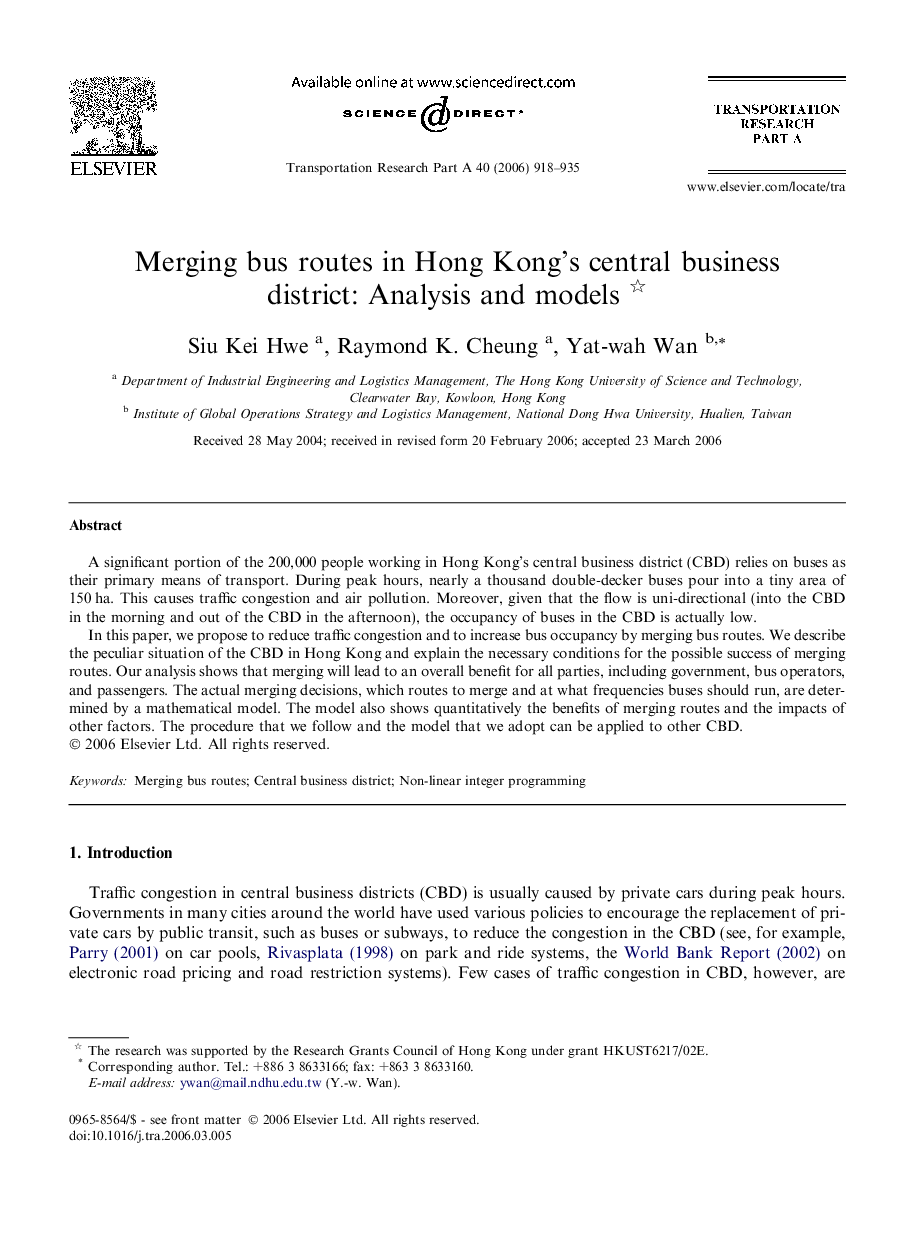| Article ID | Journal | Published Year | Pages | File Type |
|---|---|---|---|---|
| 311207 | Transportation Research Part A: Policy and Practice | 2006 | 18 Pages |
A significant portion of the 200,000 people working in Hong Kong’s central business district (CBD) relies on buses as their primary means of transport. During peak hours, nearly a thousand double-decker buses pour into a tiny area of 150 ha. This causes traffic congestion and air pollution. Moreover, given that the flow is uni-directional (into the CBD in the morning and out of the CBD in the afternoon), the occupancy of buses in the CBD is actually low.In this paper, we propose to reduce traffic congestion and to increase bus occupancy by merging bus routes. We describe the peculiar situation of the CBD in Hong Kong and explain the necessary conditions for the possible success of merging routes. Our analysis shows that merging will lead to an overall benefit for all parties, including government, bus operators, and passengers. The actual merging decisions, which routes to merge and at what frequencies buses should run, are determined by a mathematical model. The model also shows quantitatively the benefits of merging routes and the impacts of other factors. The procedure that we follow and the model that we adopt can be applied to other CBD.
